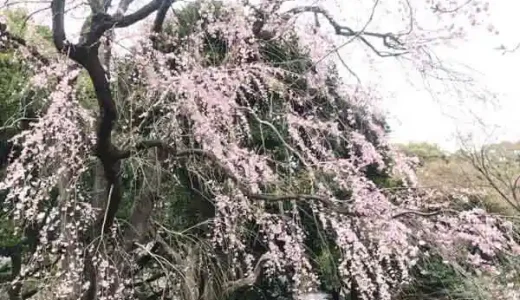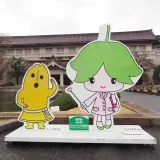If you’re traveling to Tokyo, Japan, in the spring, do Hanami at Ueno. I did Hanami at the garden of the Tokyo National Museum, which was the best place for Hanami in Tokyo. Ueno Park, next to the museum, was crowded with Hanami visitors, but the garden had fewer visitors, so that I could enjoy the cherry blossoms at my leisurely pace.
Tokyo National Museum
The Tokyo National Museum, founded in 1872, is the oldest in Japan. To get there, exit JR Ueno Station and walk through Ueno Park, which stretches in front of the “Park Exit.” The museum is about an 8-minute walk from the station.
Lunch outdoors
I arrived at the museum at lunchtime and sat on a bench in the front yard. Many other visitors sat on the outdoor courts, eating lunch.
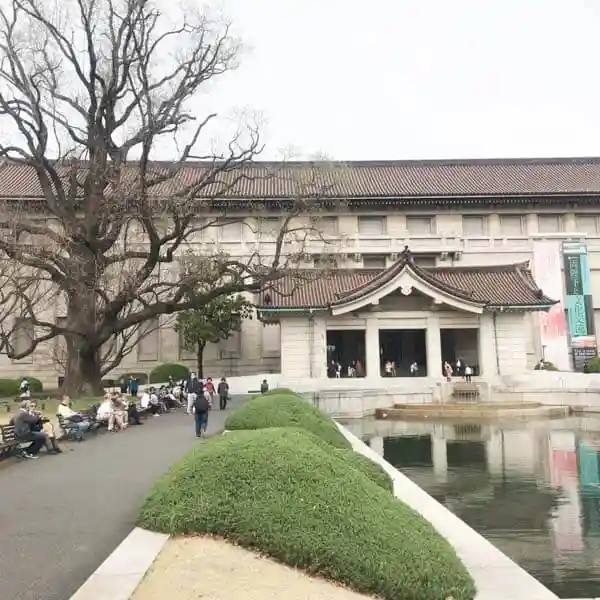
I had purchased my lunch at a kiosk in Ueno Station. The bento and beer tasted great in the spring sun.
Museum Garden
The garden on the north side of the museum’s Honkan was open to the public on this day. It is a special place for “Hanami” and is usually closed to the public. This garden is available only during the cherry blossom viewing season in spring and the fall foliage viewing season in fall.
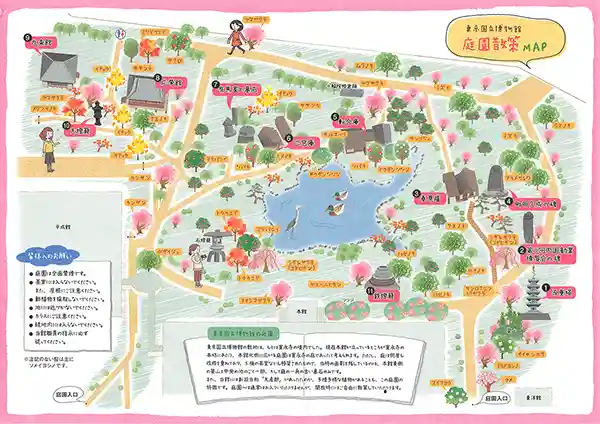
I found a path to the right with the Honkan in front of me. As I followed, the garden came into view with the Honkan on my left.。

The cherry blossoms were halfway in bloom. I looked around at the historic teahouses in the garden.
Teahouses
Shunsoro
Kawamura Zuigen (1618-1699), a famous merchant and civil engineer of the Edo period, built Shunsoro as a rest house while renovating the river. It was later owned by Hara Sankei (1863-1939), a silk merchant, and Matsunaga Yasuzaemon (1875-1971), a businessman is known as the “King of Electric Power in Japan.”
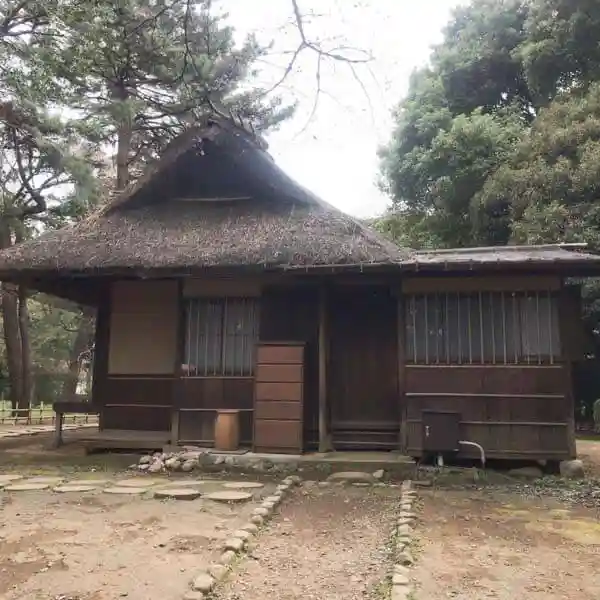
In 1948, Matsunaga donated it to the Tokyo National Museum, and it was moved to its current location in 1959.
Few people were visiting the garden, so I could take my time exploring it. This garden was so peaceful that I didn’t feel the city’s hustle and bustle.
Rokusoan
The Rokusoan tea house was originally built in the Kofukuji temple in Nara during the Keian era (1648-1652). It was known for being one of the three most famous tearooms in the Yamato area, alongside Hassoan at the Nara National Museum and Okiroku at Todaiji temple.
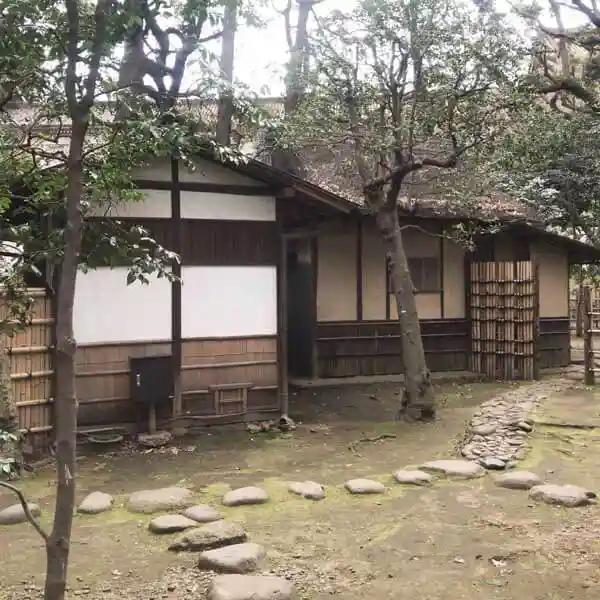
The Tokyo National Museum acquired Rokusoan in 1875, but it sank while transported near the Izu Peninsula. The tea house was rebuilt in 1977 using timbers salvaged from the sea.
Shishi-odoshi
The bamboo with water flowing through it in the photo below is a Shishi-odoshi. This device is often installed in Japanese gardens, where the Japanese find the sound it generates to be quite elegant.
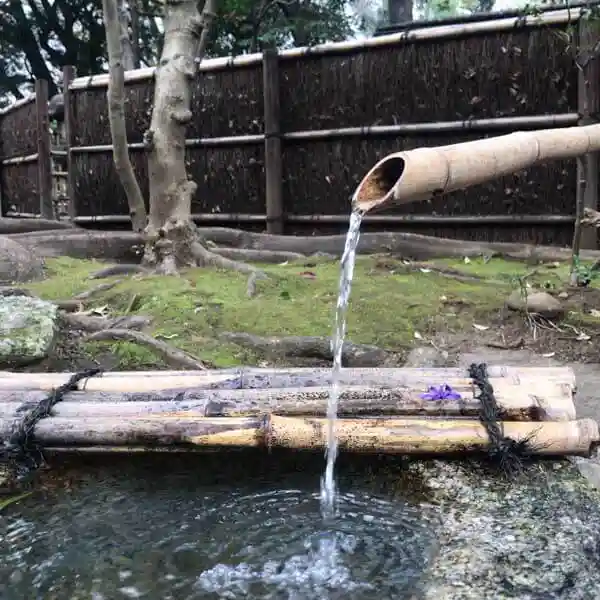
The Shishi-odoshi is a bamboo tube supported by a fulcrum near its center. When water is poured into the cylinder, the weight of the water causes the head of the tube to drop, spilling the water out. As the lightened bamboo returns to its original position, the tail of the bamboo strikes stone support, making a sound. This device was initially used as a farming tool to scare away birds and other animals.

The garden had a lawn and a big pond. From the Hassoan, I could see weeping cherry trees and the Honkan of the museum on the opposite side of the pond.
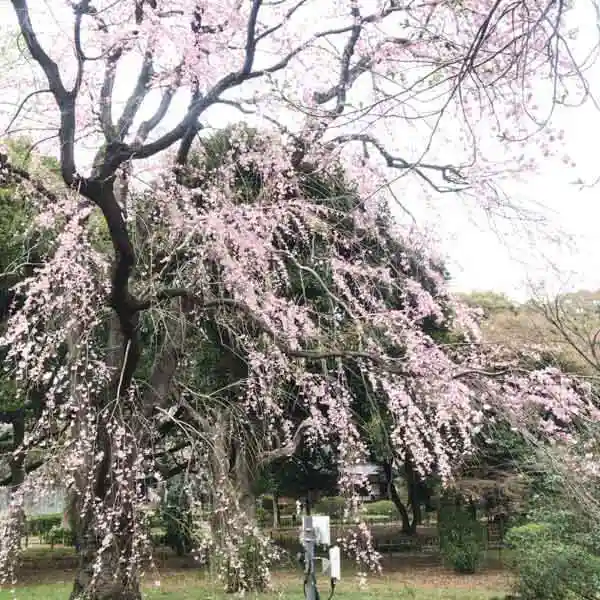
The weeping cherry tree by the pond was approximately 70% in bloom.
Tengoan
The photo below shows the garden pond and Tengoan, as viewed from the Honkan side of the museum.

Tengoan is a tea house that was built in Kyoto by the famous tea master Kobori Enshu (1579-1647) to showcase a tea caddy named “Odaimyo” that was given to him as a gift by the Hachijo no Miya imperial family. In 1963, Tengoan and “Odaimyo” became the property of the Tokyo National Museum.
Ueno Park
As I walked out of the museum’s main gate and crossed the street, I entered Ueno Park. Even though the cherry blossoms were only in their fifth bloom, many people in the park already admired them.

The garden of the Tokyo National Museum is a “great spot for cherry blossom viewing” because it’s not crowded, so you can relax and enjoy the cherry blossoms. If you can travel to Tokyo, Japan, in the spring, visit the Tokyo National Museum.




